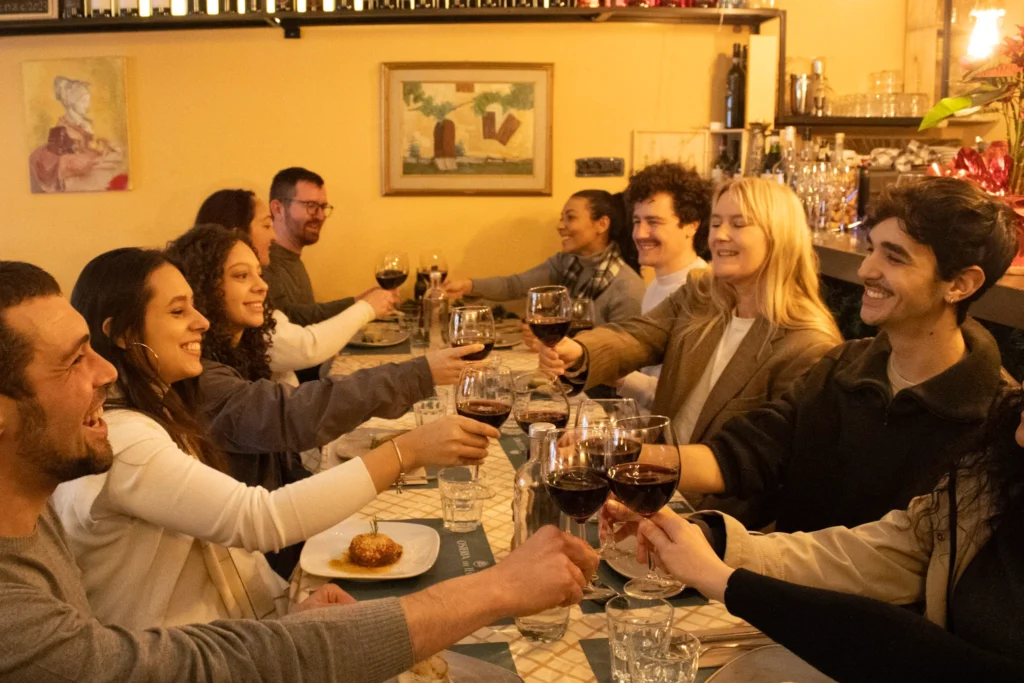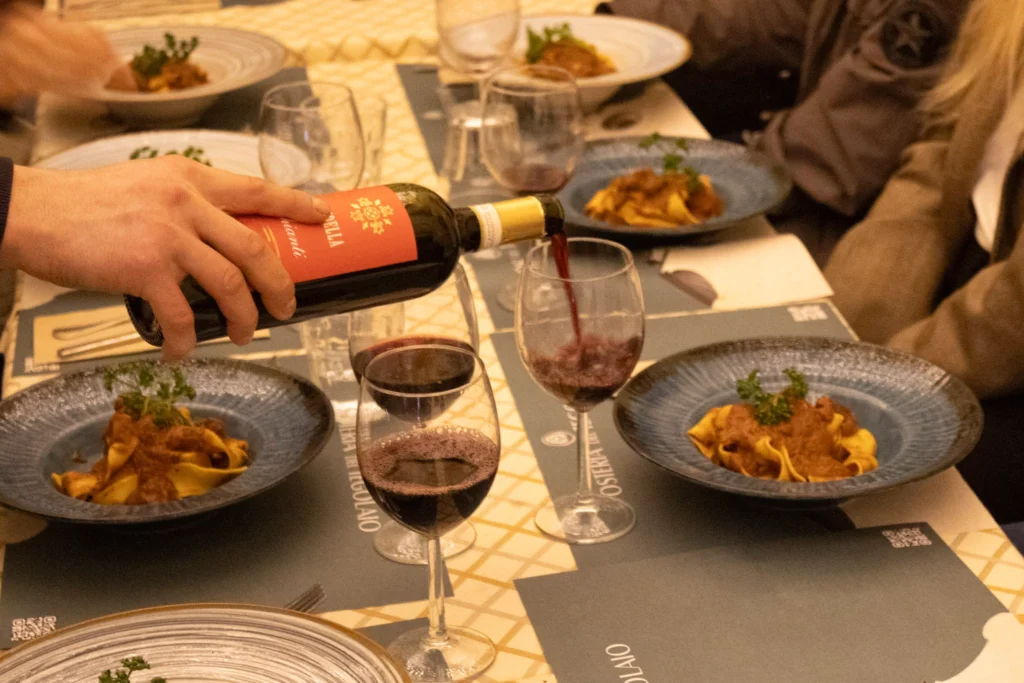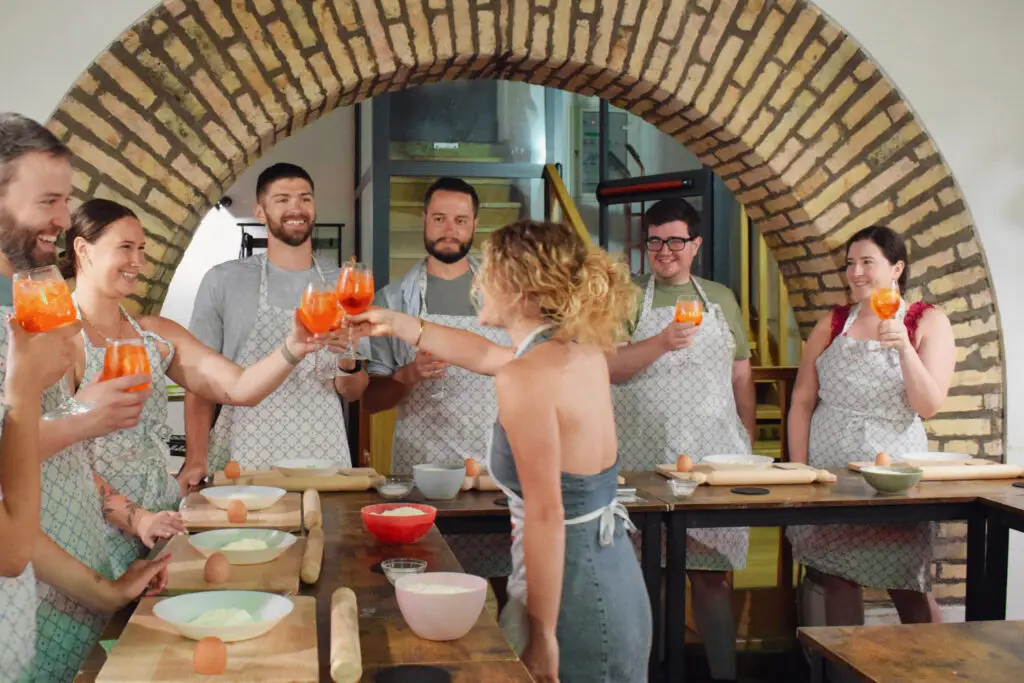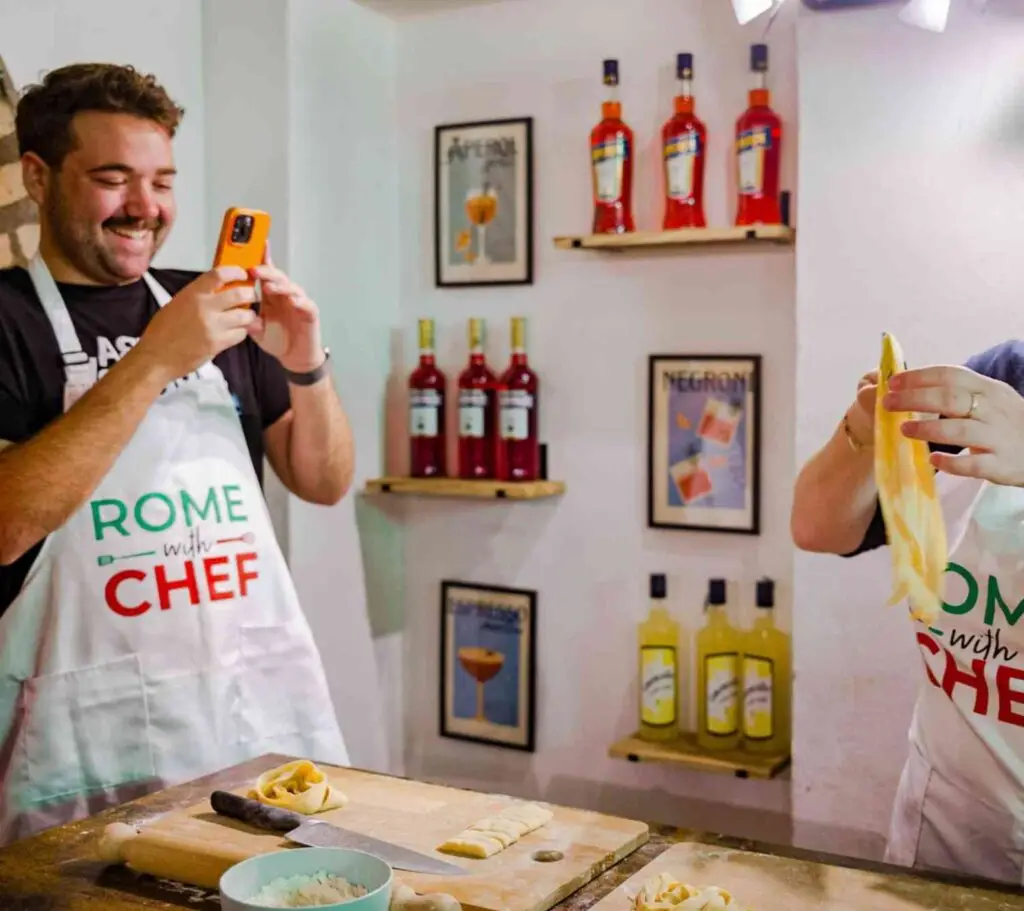In Italy, wine is more than just a drink. It’s a vital part of culture and a collective item of indulgence. Every glass you drink in an enoteca (Italian wine bar) comes with a history lesson and story — even when you don’t ask for it — in which your waiter’s distant ancestor plays the protagonist of their family’s vineyard.
This should hardly come as a surprise. Italians are natural-born storytellers and have waxed lyrical about wine since the time of ancient Rome. Wine is the natural accompaniment to their other favourite subject: food. And Italians know a thing or two about food.
👉 Join our award-winning Rome Food Tour through Trastevere
But how can someone who knows next to nothing about Italian wine get something out of Italy’s rich viticulture? How, in other words, can you get to grips with the grape?
The Appeal of Italian Wine
Italy has the world’s widest selection of grapes and uses 605 unique grapes to produce them. And yet, paradoxically, part of the beauty of Italian wine lies in its simplicity.
Some people make a pretence of wine as something that’s impenetrable, overly sophisticated, wasted on the amateur’s palate. Wine is regarded as more refined than Italian beer, for example, which has only recently taken off as an artisanal product with the advent of microbreweries. Being asked if you’d like to taste beer before ordering was, until recently, a rarity. With wine this would be an exception.
Wine, more than most drinks, demands something from its drinker. We’ve all experienced that moment at the dinner table where the waiter pours someone a small sip to taste and approve and they don’t know what to say.
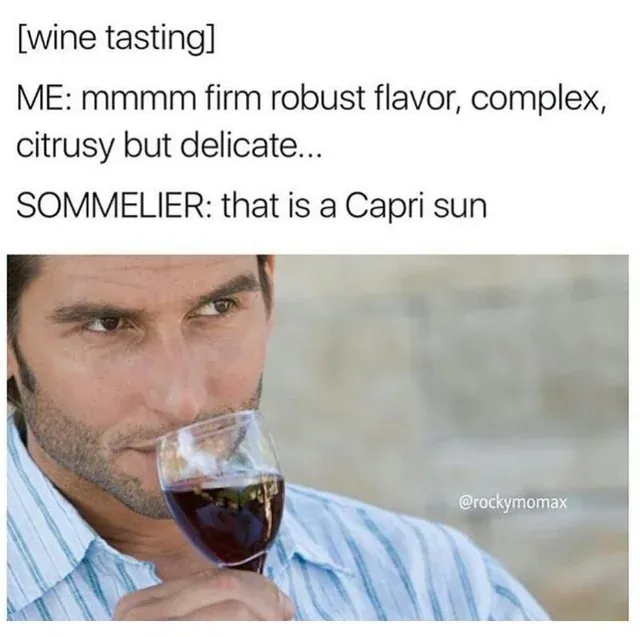
Some of us sniff and look approving. Others swill their wine and look skeptical. It has not been unknown for Brits to down the glass as quickly as they can to get it the whole ordeal over with.
Why do waiters or sommeliers give us wine to taste? They do this to give us time to taste if the wine is cooked, corked or oxidised, the latter of which would be immediately apparent from its overpowering acidity. But our collective ignorance of this touches on an important observation: that wine outdoes all others as a refined, exclusive drink. It does not have to be this way.
A good glass of Chianti, for example, is perfect for a beginner’s palate, with moderate tannins and a harmonious blend of acidity and fruit. Chianti is the kind of wine that evokes curiosity without being complex, is conversational without being verbose, and if you’re thinking that what you just read made no sense, that’s because it doesn’t. Yet this is the kind of way people write about wine to make it seem more opaque and sophisticated than necessary, and make refined wine drinkers feel part of an exclusive club.
The Confusing Nomemclature of Italian Wines
The most confusing thing you’ll face when navigating Italian wine is the names, especially given that many wines are named after places that produce wine of a different grape.
Take Montepulciano, for example. Montepulciano is the name of a medieval town in central Tuscany which produces a famous wine called Vino Nobile di Montepulciano, which is made from the Sangiovese grape. The region is also home to the so-called Montepulciano grape, which grows abundantly along Italy’s central eastern coast and is in no way related to the Vino Nobile di Montepulciano.
Which Italian regions produce the best wines?
Many would say the central Italian region of Tuscany, and their case would be compelling. Not only does it produce a range of renowned varieties, with the likes of Chianti, Brunello di Montalcino and Vino Nobile di Montepulciano deriving from its Sangiovese grapes, but its very landscape of rolling hills and lush vineyards lends itself to exploration and wine tasting.
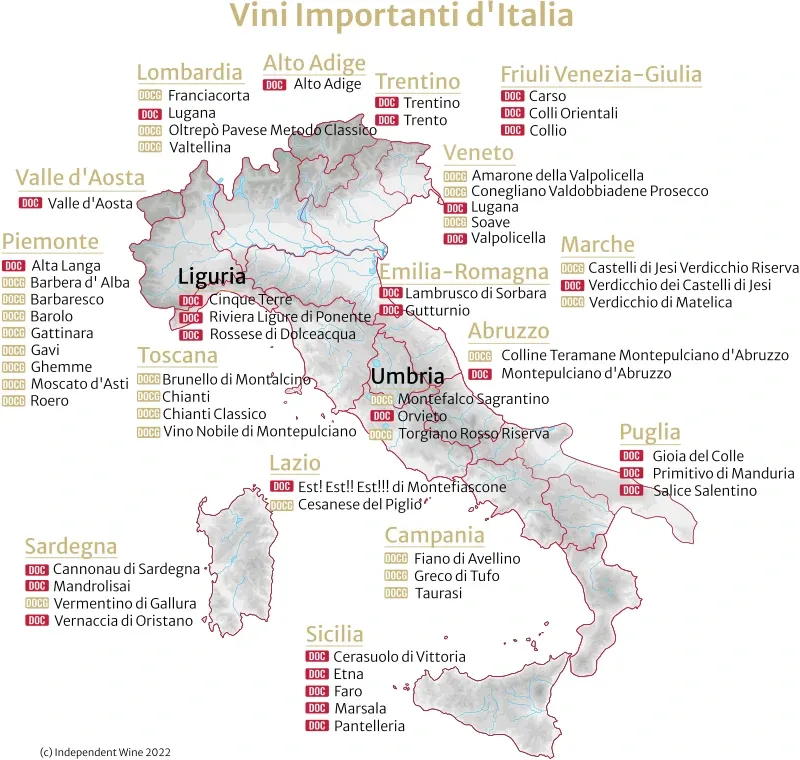
Moreover, many Tuscan wines are recognized with DOC or DOCG quality certifications.
Two Northern Italian regions could also claim top spot. Piedmont, in particular, is a wine-lovers paradise. Bordering the French and Swiss Alps as well as the Italian regions of Lombardy, Liguria and Aosta, the region boasts the most DOCG wines of Italian region including Barolo, Barbaresco and D’Alba.
The Veneto region too produces some phenomenal wines and generates more output than any other Italian region. While white wines are its forte, its pièce de résistance is prosecco, which people consume liberally across the canal-based (and coincidentally car-free) island of Venice.
Few would name Rome’s region of Lazio as the leader in Italian wine. But Lazio does produce some great grape varieties, especially dry and crisp styles like Frascati DOC and Orvieto DOC.
Regional Italian Red Wines
The Sangiovese grape reigns supreme among Tuscan wines, and while Montalcino and Montepulciano are local favourites, by far the best-known Tuscan wine is the humble Chianti.
Chianti is one of the most versatile wines in terms of what it can be paired with. Tuscan classics like tomato and meat-based pasta dishes, salami and cheeses, and bean and chickpea soups go best, but you can also pair it with pizza and olive oil-rich recipes.
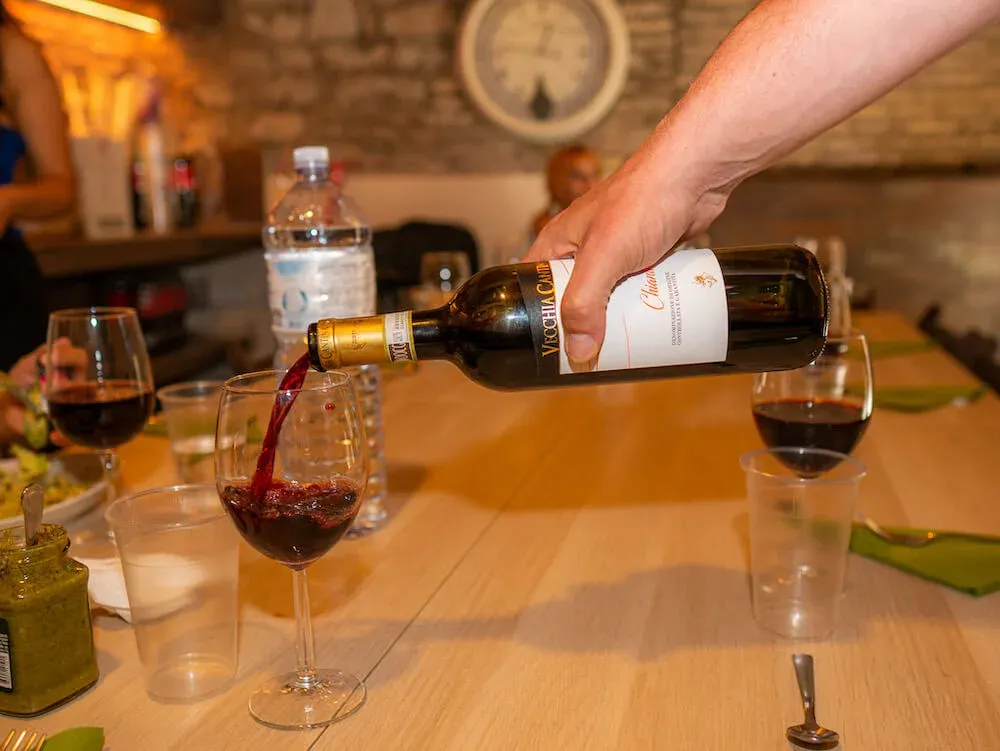
Italy’s native Nebbioli grapes produce Barolo and Barbaresco wines, which are made in Piedmont and eagerly sourced throughout the country.
Sicily’s ancient Nero d’Avola is also gaining in popularity, winning wine-lovers over with its warm, full-bodied and slightly acidic flavours. Nero d’Avola goes very well with roast or grilled red and white meats, grilled tuna and rabbit.
Prosecco
Italy and France are historic rivals, and Italian Prosecco may well have pipped French Champagne to the top spot for sparkling wines. Though Champagne may have been around a lot longer than Prosecco (the former was first produced in 1693; the latter in 1868), Prosecco is certainly far more affordable than its French counterpart and its lighter fruity, flowery flavours arguably hold broader global appeal.
→ Learn more about the differences between prosecco and champagne.
Prosecco is produced from the Glera grape and undergoes its secondary fermentation in steel tanks, a process that gives it its hallmark freshness and fruit-forward palate. The biggest Prosecco-producing regions are Veneto and Friuli Venezia Giulia in the North of Italy, and one of the best places to drink affordable, delicious Prosecco among locals is on the island of Venice, with some cichetti snacks.
Rome is awash with Italian wine bars (enoteche) serving up delicious Prosecco. But to find the best localsy bars, join a Rome Tipsy Tour!
Amber Wine
Orange wine originated in the seldom heard of Northeast Italian region of Friuli-Venezia Giulia.
Made from white grapes that macerate with their skins, seeds and sometimes even stems, this wine presents a bold, bittersweet profile with its unique hue and complex flavours. It certainly divides opinion and has only recently undergone a revival among the world’s more adventurous wine drinkers, but it’s well worth trying for something different.
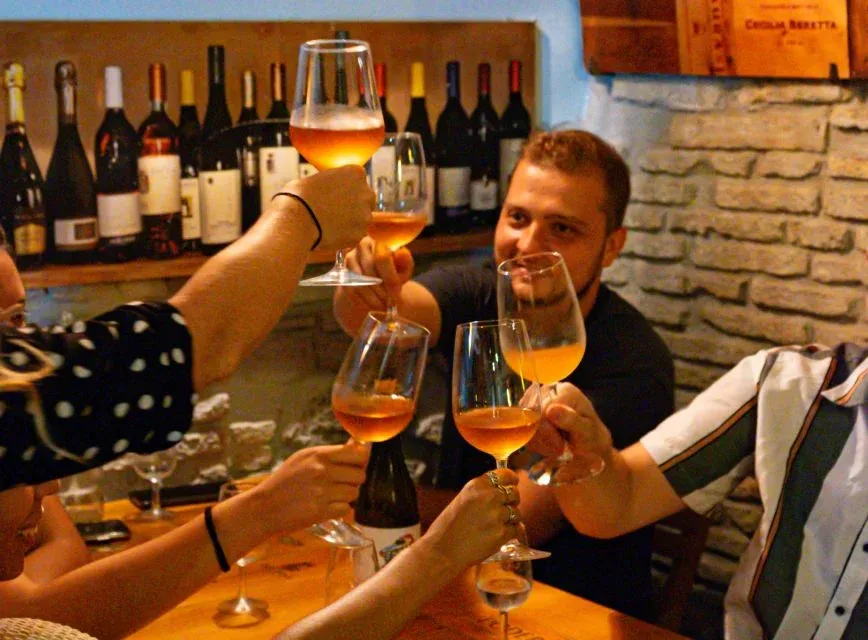
This year, the world’s annual Amber Wine festival was held in the city of Trieste in the region of Friuli Venezia Giulia. Bookmark the event link to see where the next one will take place.
Wine-Drinking Etiquette in Italy
Save your hearty “salute!” (sah-LOO-tay) for when everyone’s glass is filled, and make sure to make eye contact with people as you clink your glasses.
Let the locals guide your choices as they have the most experience with their local varieties. You will get a story/history lesson with your glass of wine, but believe us when we say that this will make it more memorable.
Lastly, don’t shy away from the house wine (vino della casa). Restaurants usually source this wine locally, or sometimes even produce it in-house, and house wine almost always has a good price/quality ratio.
Italian Wine Vocabulary
Want to speak like a local while ordering your Italian wine? Here’s some wine-related vocabulary:
- Vorrei un…: I’d like a…
- Vino rosso: red wine
- Vino bianco: white wine
- Vino rosato: rosé wine
- Vino frizzante: semi-sparkling wine
- Vino amabile: a medium-sweet wine
- Vino dolce: sweet wine
- Vino secco: dry wine
- Vino abboccato: semi-dry wine
- Vino corposo: a full-bodied wine
- Vino aromatico: aromatic wine
- Carta dei vini / lista dei vini: wine list
Immerse Yourself in Italian Food & Wine
👉 Check out our Pasta & Tiramisù Class
👉 Treat yourself to a Spritz & Spaghetti Class
👉 Join our award-winning Rome Food Tour through Trastevere
Join Our Rome Cooking Classes & Cook Like a Local!
Get all the know-how you need to become a master of Italian cuisine through our cooking classes.
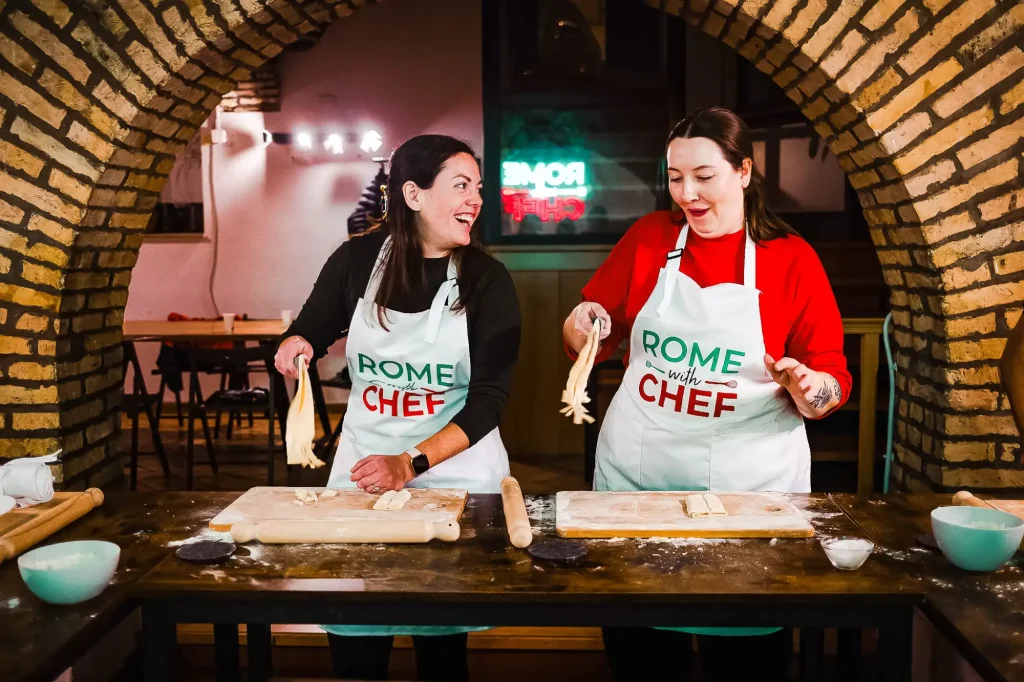
Each small-group class specialises in classic Italian recipes, from hand-made fettuccine pasta and creamy, dreamy tiramisù. If you want to treat yourself to a boozy cooking class with typical Italian cocktails, make sure to check out our Spritz and Spaghetti Class!

